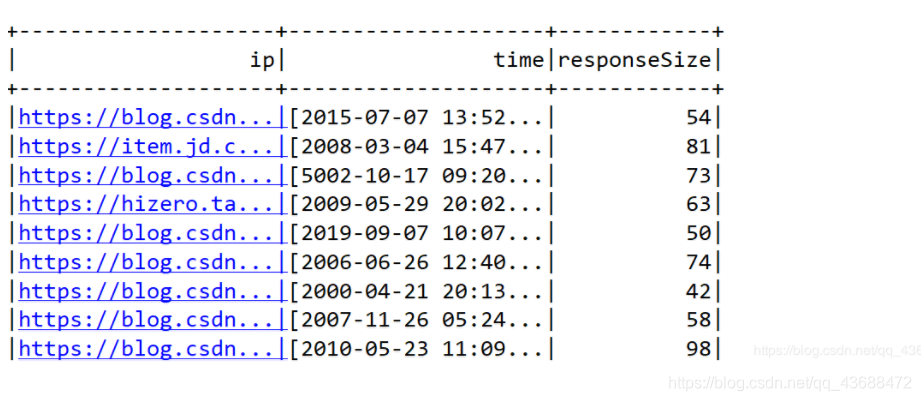Spark SQL將rdd轉換為資料集-以程式設計方式指定模式(Programmatically Specifying the Schema)
阿新 • • 發佈:2018-12-31
一:解釋
官網:https://spark.apache.org/docs/latest/sql-getting-started.html
這種場景是生活中的常態
When case classes cannot be defined ahead of time (for example, the structure of records is encoded in a string, or a text dataset will be parsed and fields will be projected differently for different users), a DataFrame can be created programmatically with three steps.
Create an RDD of Rows from the original RDD;
Create the schema represented by a StructType matching the structure of Rows in the RDD created in Step 1.
Apply the schema to the RDD of Rows via createDataFrame method provided by SparkSession.
二:操作
package g5.learning import org.apache.spark.sql.types.{LongType, StructField, StructType,StringType} import org.apache.spark.sql.{Row, SparkSession} object DFApp { def main(args: Array[String]): Unit = { val sparksession= SparkSession.builder().appName("DFApp") .master("local[2]") .getOrCreate() //inferReflection(sparksession) programmatically(sparksession) sparksession.stop() } //第二種方法是程式設計的形式 def programmatically(sparkSession: SparkSession)={ val info = sparkSession.sparkContext.textFile("file:///E:\\data.txt") //Create an RDD of Rows from the original RDD; import sparkSession.implicits._ val rdd =info.map(_.split("\t")).map(x=>Row(x(0),x(1),x(2).toLong)) //這個rdd是個row型別 //Create the schema val struct =StructType(Array( StructField("ip", StringType,true), StructField("time", StringType,false) , StructField("responseSize",LongType,false) )) //Apply the schema to the RDD of Rows via createDataFrame method provided by SparkSession. val df = sparkSession.createDataFrame(rdd,struct) df.show() } }
三:注意
1.這種型別要比官網更好,適合大部分型別
2.要注意運算元的轉換(開始的時候,找運算元也是遇到了很多麻煩,運算元很多,要注意挑選自己的需求)
四:結果

